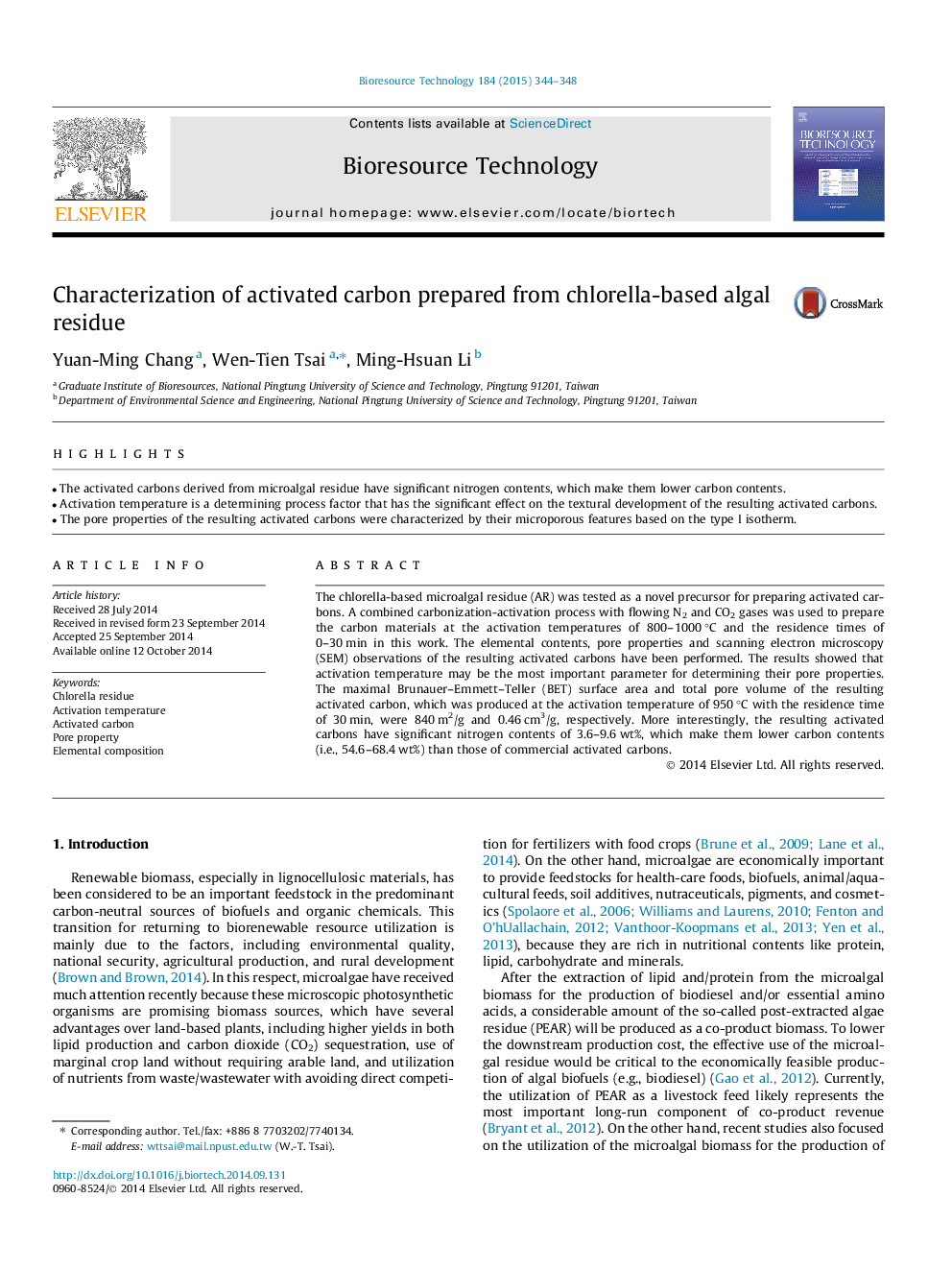| Article ID | Journal | Published Year | Pages | File Type |
|---|---|---|---|---|
| 679940 | Bioresource Technology | 2015 | 5 Pages |
•The activated carbons derived from microalgal residue have significant nitrogen contents, which make them lower carbon contents.•Activation temperature is a determining process factor that has the significant effect on the textural development of the resulting activated carbons.•The pore properties of the resulting activated carbons were characterized by their microporous features based on the type I isotherm.
The chlorella-based microalgal residue (AR) was tested as a novel precursor for preparing activated carbons. A combined carbonization-activation process with flowing N2 and CO2 gases was used to prepare the carbon materials at the activation temperatures of 800–1000 °C and the residence times of 0–30 min in this work. The elemental contents, pore properties and scanning electron microscopy (SEM) observations of the resulting activated carbons have been performed. The results showed that activation temperature may be the most important parameter for determining their pore properties. The maximal Brunauer–Emmett–Teller (BET) surface area and total pore volume of the resulting activated carbon, which was produced at the activation temperature of 950 °C with the residence time of 30 min, were 840 m2/g and 0.46 cm3/g, respectively. More interestingly, the resulting activated carbons have significant nitrogen contents of 3.6–9.6 wt%, which make them lower carbon contents (i.e., 54.6–68.4 wt%) than those of commercial activated carbons.
